
This summer, you may be able to observe an amazing event in nature. You can watch a small animal build a structure much bigger than itself, using materials from inside its own body!
This is what happens when a spider spins a web. Inside a spider are glands that can produce seven different kinds of silk. The silk comes out of little spigots, called spinnerets, at the rear of the spider's body. A strand of spider silk is stronger than a similar strand of steel, and spiders use this amazing material in many ways. If they catch an insect, they may wrap it in silk, to eat later. Female spiders enclose their eggs in a silken sac to protect them. And some spiders—almost always females—make webs that are death traps for insects. Webs can be in the shape of funnels, sheets, or domes, but the best-known are called orb webs. From an orb web's center, lines of silk radiate out in all directions, like the spokes of a bicycle wheel. After building this basic structure, a spider goes round and round, laying down ever-bigger circles of silk. Some of the silk threads have sticky glue to catch a moth or other prey. A spider can create this whole complex design in an hour or less. When an orb web is complete, some kinds of spiders wait right in the center. Others hide at an edge. Either way, the builder keeps a front leg in touch with the web. Vibrations from the threads tell a spider whether prey has been caught. Spiders often have to repair their webs, and some species routinely build a new one every day. And they recycle! They eat most of their old web. After digestion, it becomes brand new silk for the next construction job. You may be able to watch a spider on the job. Look for webs in a field, park, or backyard. Also look for webs near doors, windows, or on a porch. The nighttime lights from such places attract night-flying insects, and spiders often build webs there. They may or may not be orb webs, but watching any kind of spider at work on its silken insect-trap can be fascinating fun. And remember: the spider wants nothing to do with you. It is just trying to stay safe and catch some food.
This video was shot by Ingrid Taylor, " I shot this a few minutes after the rain subsided, when the City of Spiders outside the door came to life. Mass web-building and repair going on..." wikimedia commons
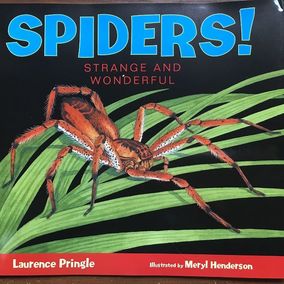
.To learn more about the lives of spiders, and see spectacular realistic illustrations, see Laurence Pringle's book:
MLA 8 Citation
Pringle, Laurence. "Watch a Webmaster at Work!" Nonfiction Minute, iNK Think Tank, 14 June 2018, www.nonfictionminute.org/the-nonfiction-minute/ Watch-a-Webmaster-at-Work.
1 Comment
 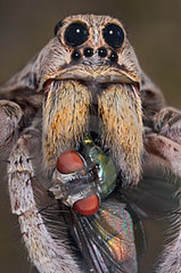 Would you like this fellow waiting for you in your garage? Would you like this fellow waiting for you in your garage? When I was about 10 years old, I lived in a small town on a prairie. I had to walk to and from school each day taking a short cut through our dark, crowded garage. This was fine until the spiders set up home in each corner of the garage-door opening, spinning huge blobs of flimsy webs, hanging there, ready to drop on my head or down my back. I ran under them to the safety of the alley. They feasted on Minnesota’s mosquitoes, growing to what I imagined to be tennis ball-sized bodies with red and yellow stripes, long, thick hairy legs, and large bulb-like eyes. My brother and sister thought they were monsters; we shudder when we remember them. But actually they were wolf spiders because like wolves, they’re predators. They lie in wait for prey to come close. Then they chase and pounce on it, stinging it with their venom that dissolves the organs so the spider can suck up the nourishment. In March of 2012, wolf spiders made news in Wagga Wagga, Australia, a town of 50,000 a few hours south of Sydney, Australia’s largest city. Some say due to climate change, it rained much more than usual, causing the river, peacefully flowing through the town, to flood the fields. It flooded the hibernation holes of the wolf spiders, which they had dug a few months earlier in the sun-baked ground and lined with silk, ready for the coming winter. The floodwaters woke up the spiders, which fled for higher ground, bushes, trees, houses, poles, any high places. As more than a million spiders ran they trailed behind “drag lines” of silk that caught the wind lifting some of them through the air. Countless thin trails of silk covered the bushes and fields, creating a blanket of web, looking like snow. No one had seen anything like it. When I read it about it, I knew instantly that this was the spider that terrorized me as a child. Wolf spiders are found all over the world, in Minnesota and Australia. I believe that this was a small whisper from the earth about what is happening to it. If this damage in Wagga Wagga was caused by climate change, imagine the invasions and changes that may yet come. The next even could be a shout. MLA 8 Citation Marx, Trish. "The Invasion of the Wolf Spiders." Nonfiction Minute, iNK Think Tank, 6 Oct. 2017, www.nonfictionminute.org/the-nonfiction-minute/the-invasion-of-the-wolf-spiders. 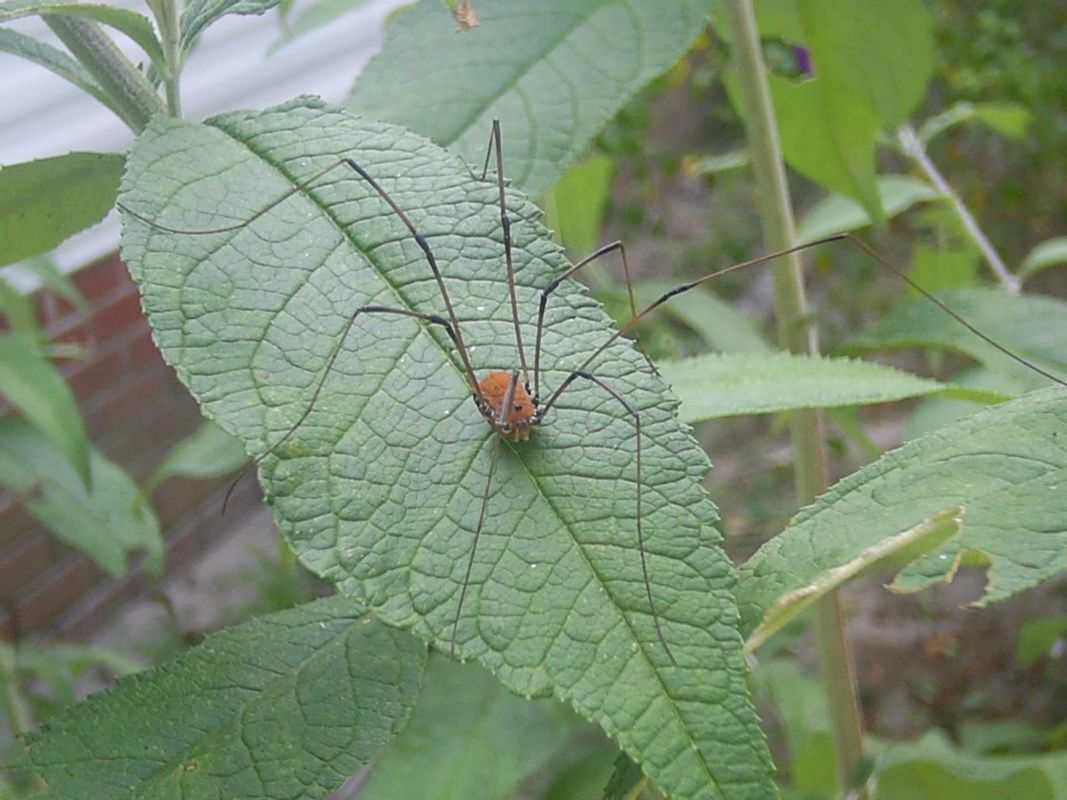 Daddy longlegs are the spiders we run across the most often, right? Think again. How many body parts does a spider have? Two. A “head” (called a cephalothorax) and an abdomen (where that sticky silk comes from). How many body parts does a daddy longlegs have? One. So, these animals aren’t even spiders. Daddy longlegs are one of many animals called opilionids (oo-pill-ee-OH-nidz). They are in the same animal class as spiders (Arachnida), and they all have long legs so they look like spiders—but they’re a separate order. Opilionids aren’t dangerous to humans, but their predators had better watch out. Scientist Dr. Thomas Eisner discovered that a daddy longlegs carries toxin in its armpits. His research began one day when travelling through Texas. He picked up a daddy longlegs and smelled it— that’s right, his nose was his scientific instrument. He observed an odd smell so he carted the creature back to his motel room and studied it. The smell was a toxic chemical called benzoquinone (say BEN-zo-qwi-NO-ne). So of course, Dr. Eisner wanted to know more about that! The chemical is toxic when it is a gas or a liquid, but not when it is a solid. On the side of the animal’s body–basically in its armpit–Dr. Eisner found a sac-like gland. In that gland? Solid benzoquinone. When a predator such as an ant threatens the daddy longlegs, he spits up a drop of gut juice. That liquid travels down a groove from his mouth to the gland. In less than a second, he dissolves a bit of that benzoquinone into the liquid and creates toxic ammunition. You know those two long legs daddy longlegs use as feelers? He dips the tip of one of them into the toxic drop then slaps it on his predator. Take that you scary ant! They flee. The opilionid can reload his feelers up to thirty times from one toxic drop. When his ammo runs low, all he needs to do is drink water and spit again. Other types of opilionids skip the feelers and just let the liquid ooze out around their body, creating a super toxic safety shield. What other secrets might opilionids be hiding? Not many people study them, so who knows?!? Maybe you will sniff out a discovery! 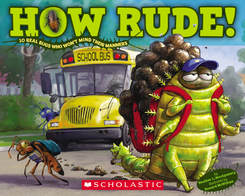 Some bugs litter. Some pass gas. Some bugs throw their poop! Discover ten of the rudest, crudest bugs around. Full of scientific facts, humor and just the right amount of yuck, Heather L. Montgomery's How Rude! features a countdown of the top 10 bad bugs who just won't mind their manners. One part illustration and one part photography, How Rude! is hilarious, informative, and seriously gross! MLA 8 Citation
Montgomery, Heather L. "Toxic Armpits." Nonfiction Minute, iNK Think Tank, 6 Dec. 2017, www.nonfictionminute.org/ Toxic-Armpits. |
*NEWS
|
For Vicki Cobb's BLOG (nonfiction book reviews, info on education, more), click here: Vicki's Blog
The NCSS-CBC Notable Social Studies Committee is pleased to inform you
that 30 People Who Changed the World has been selected for Notable Social Studies Trade Books for Young People 2018, a cooperative project of the National Council for the Social Studies (NCSS) & the Children’s Book Council
Categories
All
Abolitionists
Adams Janus
Adaptation
Adaptations
Adkins Jan
Advertising
Aerodynamics
Africa
African American History
African Americans
Africa West
Agriculture
Aircraft
Air Pilots
Air Pressure
Air Travel
Albee Sarah
Alchemy
Alligators
Allusion
American History
American Icons
Amphibians
Amundsen Roald
Anatomy
Ancient
Ancient Cultures
Anderson Marian 1897-1993
Animal Behavior
Animal Experimentation
Animal Intelligence
Animals
Animation
Antarctica
Ants
Apache Indians
Apes
April Fool's Day
Architecture
Argument
Arithmetic
Art
Art Deco
Artists
Arts
Asia
Astronauts
Astronomy
Athletes
Atomic Theory
Audubon Societies
Authors
Autobiography
Automobiles
Aviation
Awards
Bacteria
Baseball
Battuta Ibn
Bears
Beatles
Beavers
Bees
Biodegradation
Biography
Biology
Biomes
Biomimicry
Biplanes
Birds
Black Death
Black History
Blindness
Blizzards
Bombs
Bonaparte Napoleon
Boone Daniel
Botany
Brazil
Bridges
Brill Marlene Targ
Brooklyn Bridge
Brown John
Buffaloes
Building Materials
Butterflies
Caesar
Caesar Julius
Caissons
Calculus
Calendars
Cannibal
Capitals
Caravaggio
Carbon Dioxide
Carnivores
Carson Mary Kay
Cartoons & Comics
Carving (Decorative Arts)
Cascade Range
Castaldo Nancy
Castles
Castrovilla Selene
Cathedrals
Cats
Caves
Celts
Cemeteries
Chemistry
Children's Authors
Child Welfare
China
Choctaw Indians
Christmas
Chronometers
Cicadas
Cinco De Mayo
Ciphers
Circle
Citizenship
Civil Rights
Civil Rights Movements
Civil War
Civil War - US
Climate
Climate Change
Clocks And Watches
Clouds
Cobb Vicki
COBOL (Computer Language)
Code And Cipher Stories
Collard III Sneed B.
Collectors And Collecting
Color
Commerce
Communication
Competition
Compilers
Composers
Computers
Congressional Gold Medal
Consitution
Contests
Contraltos
Coolidge Calvin
Cooling
Corms
Corn
Counterfeiters
Covid-19
Crocodiles
Cryptography
Culture
Darwin Charles
Declaration Of Independence
Decomposition
Decompression Sickness
Deep-sea Animals
Deer
De Medici Catherine
Design
Detectives
Dickens Charles
Disasters
Discrimination
Diseases
Disney Walt
DNA
Dogs
Dollar
Dolphins
Douglass Frederick 1818-1895
Droughts
Dr. Suess
Dunphy Madeleine
Ear
Earth
Earthquakes
Ecology
Economics
Ecosystem
Edison Thomas A
Education
Egypt
Eiffel-gustave-18321923
Eiffel-tower
Einstein-albert
Elephants
Elk
Emancipationproclamation
Endangered Species
Endangered-species
Energy
Engineering
England
Englishlanguage-arts
Entomology
Environmental-protection
Environmental-science
Equinox
Erie-canal
Etymology
Europe
European-history
Evolution
Experiments
Explorers
Explosions
Exports
Extinction
Extinction-biology
Eye
Fairs
Fawkes-guy
Federalgovernment
Film
Fires
Fishes
Flight
Floods
Flowers
Flute
Food
Food-chains
Foodpreservation
Foodsupply
Food-supply
Football
Forceandenergy
Force-and-energy
Forensicscienceandmedicine
Forensic Science And Medicine
Fossils
Foundlings
France
Francoprussian-war
Freedom
Freedomofspeech
French-revolution
Friction
Frogs
Frontier
Frontier-and-pioneer-life
Frozenfoods
Fugitiveslaves
Fultonrobert
Galapagos-islands
Galleys
Gametheory
Gaudi-antoni-18521926
Gender
Generals
Genes
Genetics
Geography
Geology
Geometry
Geysers
Ghosts
Giraffe
Glaciers
Glaucoma
Gliders-aeronautics
Global-warming
Gods-goddesses
Gold-mines-and-mining
Government
Grant-ulysses-s
Grasshoppers
Gravity
Great-britain
Great-depression
Greece
Greek-letters
Greenberg Jan
Hair
Halloween
Handel-george-frederic
Harness Cheryl
Harrison-john-16931776
Health-wellness
Hearing
Hearing-aids
Hearst-william-randolph
Henry-iv-king-of-england
Herbivores
Hip Hop
History
History-19th-century
History-france
History-world
Hitler-adolph
Hoaxes
Holidays
Hollihan Kerrie Logan
Homestead-law
Hopper-grace
Horses
Hot Air Balloons
Hot-air-balloons
Housing
Huguenots
Human Body
Hurricanes
Ice
Icebergs
Illustration
Imagery
Imhotep
Imperialism
Indian-code-talkers
Indonesia
Industrialization
Industrial-revolution
Inquisition
Insects
Insulation
Intelligence
Interstatecommerce
Interviewing
Inventions
Inventors
Irrational-numbers
Irrigation
Islands
Jacksonandrew
Jazz
Jeffersonthomas
Jefferson-thomas
Jemisonmae
Jenkins-steve
Jet-stream
Johnsonlyndonb
Jokes
Journalism
Keeling-charles-d
Kennedyjohnf
Kenya
Kidnapping
Kingmartinlutherjr19291968
Kingmartinlutherjr19291968d6528702d6
Kings-and-rulers
Kings Queens
Kings-queens
Koala
Labor
Labor Policy
Lafayette Marie Joseph Paul Yves Roch Gilbert Du Motier Marquis De 17571834
Landscapes
Languages-and-culture
Law-enforcement
Layfayette
Levers
Levinson Cynthia
Lewis And Clark Expedition (1804-1806)
Lewis Edmonia
Liberty
Lift (Aerodynamics)
Light
Lindbergh Charles
Liszt Franz
Literary Devices
Literature
Lizards
Longitude
Louis XIV King Of France
Lumber
Lunar Calendar
Lynching
Macaws
Madison-dolley
Madison-james
Madison-james
Mammals
Maneta-norman
Maneta-norman
Marathon-greece
Marine-biology
Marine-biology
Marines
Marsupials
Martial-arts
Marx-trish
Mass
Massachusetts-maritime-academy
Mass-media
Mastodons
Mathematics
May-day
Mcclafferty-carla-killough
Mcclafferty-carla-killough
Mckinley-william
Measurement
Mechanics
Media-literacy
Media-literacy
Medicine
Memoir
Memorial-day
Metaphor
Meteorology
Mexico
Mickey-mouse
Microscopy
Middle-west
Migration
Military
Miners
Mississippi
Molasses
Monarchy
Monsters
Montgomery
Montgomery-bus-boycott-19551956
Montgomery-heather-l
Monuments
Moon
Moran-thomas
Morsecode
Morsesamuel
Moss-marissa
Moss-marissa
Motion
Motion-pictures
Mummies
Munro-roxie
Munro-roxie
Musclestrength
Museums
Music
Muslims
Mythologygreek
Nanofibers
Nanotechnology
Nathan-amy
Nathan-amy
Nationalfootballleague
Nationalparksandreserves
Nativeamericans
Native-americans
Native-americans
Naturalhistory
Naturalists
Nature
Nauticalcharts
Nauticalinstruments
Navajoindians
Navigation
Navy
Ncaafootball
Nervoussystem
Newdeal19331939
Newman-aline
Newman-aline
Newton-isaac
New-york-city
Nobelprizewinners
Nomads
Nonfictionnarrative
Nutrition
Nylon
Nymphs-insects
Oaths Of Office
Occupations
Ocean
Ocean-liners
Olympics
Omnivores
Optics
Origami
Origin
Orphans
Ottomanempire
Painters
Painting
Paleontology
Pandemic
Paper-airplanes
Parksrosa19132005
Parrots
Passiveresistance
Patent Dorothy Hinshaw
Peerreview
Penguins
Persistence
Personalnarrative
Personification
Pets
Photography
Physics
Pi
Pigeons
Pilots
Pinkertonallan
Pirates
Plague
Plains
Plainsindians
Planets
Plantbreeding
Plants
Plastics
Poaching
Poetry
Poisons
Poland
Police
Political-parties
Pollen
Pollution
Polo-marco
Populism
Portraits
Predation
Predators
Presidentialmedaloffreedom
Presidents
Prey
Prey-predators
Prey-predators
Prime-meridian
Pringle Laurence
Prohibition
Proteins
Protestandsocialmovements
Protestants
Protestsongs
Punishment
Pyramids
Questioning
Radio
Railroad
Rainforests
Rappaport-doreen
Ratio
Reading
Realism
Recipes
Recycling
Refrigerators
Reich-susanna
Religion
Renaissance
Reproduction
Reptiles
Reservoirs
Rheumatoidarthritis
Rhythm-and-blues-music
Rice
Rivers
Roaringtwenties
Roosevelteleanor
Rooseveltfranklind
Roosevelt-franklin-d
Roosevelt-theodore
Running
Russia
Safety
Sanitation
Schwartz David M
Science
Scientificmethod
Scientists
Scottrobert
Sculpture
Sculpturegardens
Sea-level
Seals
Seals-animals
Secretariesofstate
Secretservice
Seeds
Segregation
Segregationineducation
Sensessensation
September11terroristattacks2001
Seuss
Sextant
Shackletonernest
Shawneeindians
Ships
Shortstories
Silkworms
Simple-machines
Singers
Siy Alexandra
Slavery
Smuggling
Snakes
Socialchange
Social-change
Socialjustice
Social-justice
Socialstudies
Social-studies
Social-studies
Sodhouses
Solarsystem
Sound
Southeast-asia
Soybean
Space Travelers
Spain
Speech
Speed
Spiders
Spies
Spiritualssongs
Sports
Sports-history
Sports-science
Spring
Squirrels
Statue-of-liberty
STEM
Storms
Strategy
Sugar
Sumatra
Summer
Superbowl
Surgery
Survival
Swanson-jennifer
Swinburne Stephen R.
Synthetic-drugs
Taiwan
Tardigrada
Tasmania
Tasmanian Devil
Tasmanian-devil
Technology
Tecumsehshawneechief
Telegraph-wireless
Temperature
Tennis
Terrorism
Thomas Peggy
Thompson Laurie Ann
Time
Titanic
Tombs
Tortoises
Towle Sarah
Transcontinental-flights
Transportation
Travel
Trees
Trung Sisters Rebellion
Tundra
Turnips
Turtles
Typhoons
Underground Railroad
Us-environmental-protection-agency
Us History
Us-history
Ushistoryrevolution
Us History Revolution
Us-history-war-of-1812
Us Presidents
Ussupremecourtlandmarkcases
Vacations
Vaccines
Vangoghvincent
Vegetables
Venom
Vietnam
Viruses
Visual-literacy
Volcanoes
Voting-rghts
War
Warne-kate
Warren Andrea
Washington-dc
Washington George
Water
Water-currents
Wax-figures
Weapons
Weather
Weatherford Carole Boston
Whiting Jim
Wildfires
Winds
Windsor-castle
Wolves
Woman In History
Women
Women Airforce Service Pilots
Women-airforce-service-pilots
Womeninhistory
Women In History
Women-in-science
Women's History
Womens-roles-through-history
Wonder
Woodson-carter-godwin-18751950
World-war-i
World War Ii
World-war-ii
Wright Brothers
Writing
Writing-skills
Wwi
Xrays
Yellowstone-national-park
Zaunders Bo
ArchivesMarch 2021
February 2021
January 2021
December 2020
November 2020
October 2020
September 2020
June 2020
May 2020
April 2020
March 2020
February 2020
January 2020
December 2019
October 2019
September 2019
August 2019
July 2019
May 2019
April 2019
March 2019
February 2019
January 2019
December 2018
November 2018
September 2018
June 2018
May 2018
April 2018
March 2018
February 2018
January 2018
December 2017
November 2017
October 2017
September 2017
March 2017
The NONFICTION MINUTE, Authors on Call, and. the iNK Books & Media Store are divisions of iNK THINK TANK INC.
a 501 (c) (3) nonprofit corporation. To return to the iNK Think Tank landing page click the icon or the link below. :
http://inkthinktank.org/
For more information or support, contact thoughts@inkthinktank.org
For Privacy Policy, go to
Privacy Policy
© COPYRIGHT the Nonfiction Minute 2020.
ALL RIGHTS RESERVED.
This site uses cookies to personalize your experience, analyze site usage, and offer tailored promotions. www.youronlinechoices.eu
Remind me later
Archives
March 2023
February 2023
January 2023
December 2022
November 2022
October 2022
September 2022
June 2022
May 2022
April 2022
March 2022
February 2022
January 2022
December 2021
November 2021
September 2021
April 2021
March 2021
February 2021
November 2020
October 2020
September 2020
June 2020
May 2020
April 2020
March 2020
February 2020
January 2020
October 2019
August 2019
July 2019
May 2019
April 2019
December 2018
September 2018
June 2018
May 2018
March 2018
February 2018
January 2018
December 2017
November 2017
October 2017
September 2017




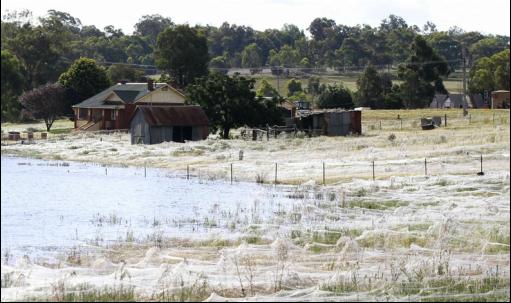
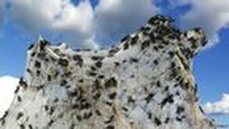
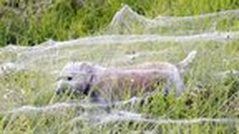
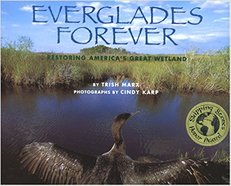




 RSS Feed
RSS Feed
